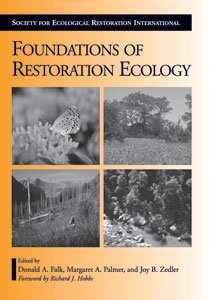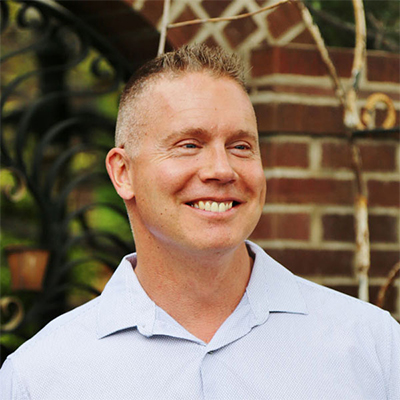
Foundations of Restoration Ecology
384 pages
7 x 10

384 pages
7 x 10
As the practical application of ecological restoration continues to grow, there is an increasing need to connect restoration practice to areas of underlying ecological theory. Foundations of Restoration Ecology is an important milestone in the field, bringing together leading ecologists to bridge the gap between theory and practice by translating elements of ecological theory and current research themes into a scientific framework for the field of restoration ecology.
Each chapter addresses a particular area of ecological theory, covering traditional levels of biological hierarchy (such as population genetics, demography, community ecology) as well as topics of central relevance to the challenges of restoration ecology (such as species interactions, fine-scale heterogeneity, successional trajectories, invasive species ecology, ecophysiology). Several chapters focus on research tools (research design, statistical analysis, modeling), or place restoration ecology research in a larger context (large-scale ecological phenomena, macroecology, climate change and paleoecology, evolutionary ecology).
The book makes a compelling case that a stronger connection between ecological theory and the science of restoration ecology will be mutually beneficial for both fields: restoration ecology benefits from a stronger grounding in basic theory, while ecological theory benefits from the unique opportunities for experimentation in a restoration context.
Foundations of Restoration Ecology advances the science behind the practice of restoring ecosystems while exploring ways in which restoration ecology can inform basic ecological questions. It provides the first comprehensive overview of the theoretical foundations of restoration ecology, and is a must-have volume for anyone involved in restoration research, teaching, or practice.
"Restoration is a keystone strategy for conserving biodiversity, and ecology has matured into a central discipline of the biological sciences. This important work shows us that their synergy offers new hope for the future of life on Earth."
Edward O. Wilson, winner of two Pulitzer Prizes, University Research Professor Emeritus, Harvard University
"Humanity has damaged more than half the land surface on Earth, making restoration an essential tool to preserve biodiversity. It is also the ultimate test of whether we scientists know enough to do the job. There is no better place to find out than inside this book."
Stuart Pimm, Doris Duke Professor of Conservation Ecology, Duke University
"The publication of this book is an important event, a coming-of-age of restoration—it's an indispensable key to the survival and well-being of classic ecosystems, setting the context for basic ecological research. A rich trove of ecological theory in productive and provocative dialogue with restoration practice."
William R. Jordan III, Director, New Academy and DePaul University Institute for Nature and Culture
"This volume explores classical ecological theory from a perspective that identifies optimal strategies behind the practical application of restoration ecology in the near future. The editors and authors have produced a paragon of sustainability science."
Jelte van Andel, Professor of plant ecology, University of Gronigen, The Netherlands
"This is a comprehensive synthesis of the conceptual basis of the field of restoration ecology. With contributions by leading theoretical ecologists as well as by recognized restoration ecologists, it covers the range of hierarchies from population genetics to macroecology."
Edith B. Allen, Professor, Department of Botany and Plant Sciences, UC, Riverside
Foreword
Acknowledgments
Chapter 1. Ecological Theory and Restoration Ecology
PART I. Ecological Theory and the Restoration of Populations and Communities
Chapter 2. Population and Ecological Genetics in Restoration Ecology
Chapter 3. Ecophysiological Constraints on Plant Responses in a Restoration Setting
Chapter 4. Implications of Population Dynamic and Metapopulation Theory for Restoration
Chapter 5. Restoring Ecological Communities: From Theory to Practice
Chapter 6. Evolutionary Restoration Ecology
PART II. Restoring Ecological Function
Chapter 7. Topographic Heterogeneity Theory and Ecological Restoration
Chapter 8. Food-Web Approaches in Restoration Ecology
Chapter 9. The Dynamic Nature of Ecological Systems: Multiple States and Restoration Trajectories
Chapger 10. Biodiversity and Ecosystem Functioning in Restored Ecosystems: Extracting Principles for a Synthetic Perspective
Chapte 11. A Modeling Framework for Restoration Ecology
PART III. Restoration Ecology in Context
Chapte 12. Using Ecological Theory to Manage or Restore Ecosystems Affected by Invasive Plant Species
Chapter 13. Statistical Issues and Study Design in Ecological Restorations: Lessons Learned from Marine Reserves
Chapter 14. Ecological Restoration from a Macroscopic Perspective
Chapter 15. Climate Change and Paleoecology: New Contexts for Restoration Ecology
Chapter 16. Integrating Restoration Ecology and Ecological Theory: A Synthesis
About the Editors
About the Contributors
Index
It can seem like every news story spells bad news for the environment—from the ongoing clean water crisis in Flint, Michigan to Earth's hottest summer ever recorded. But it's not all doom-and-gloom. With so many dedicated people working on environmental issues, there are also stories of hope. We asked Island Press authors to share good news in their field. Check out the inspiring stories they shared below and if you know of other environmental success stories, share them in the comments.
 Abbie Gascho Landis, author of Immersion:
Abbie Gascho Landis, author of Immersion:
Last summer, mussel biologists and crew worked to relocate over 100,000 mussels, many federally protected, prior to the construction of the I-74 bridge over the Mississippi River. There's also the creation of the Fairmount Water Works' Mussel Hatchery in Pennsylvania, and the proposed listing of the yellow lance mussel as a threatened species under the Endangered Species Act. While it's sad that the mussel needs to be listed, the act of listing it means that its habitat (which is significant!) might benefit from more protections. Better to list a declining species than to ignore it. There's also this video of mussel sexy time, which is awesome, if not newsy.

Laurie Ann Mazur, editor of the Urban Resilience Project and Resilience Matters:
Left behind by the globalized economy, Buffalo New York has lost more than half its population since 1950. By 2005, when the community group People United for Sustainable Housing (PUSH) Buffalo was founded, West Side residents were struggling with unemployment, rampant blight and high energy costs.
At that time, there were an estimated 23,000 vacant homes in Buffalo. PUSH took on a state housing agency that was using vacant buildings to speculate on Wall Street, and got the buildings turned over to the community—with funding to fix them up. Next, PUSH brought together hundreds of community residents to craft a plan for a large, blighted area. The result is a 25-square block Green Development Zone (GDZ) that is now a model of energy efficient, affordable housing. PUSH and its non-profit development company rehabilitate homes in the GDZ, installing efficiency upgrades like insulation and geothermal heating that dramatically lower residents’ utility bills. PUSH also won a New York State grant to build 46 new homes—including a “net zero” house that produces as much energy as it consumes.
The GDZ doubles as a jobs program. Through its construction projects, PUSH has cultivated a growing network of contractors who are committed to hiring locally. And PUSH successfully advocated for New York’s Green Jobs - Green New York program, which seeks to create 35,000 jobs while providing energy upgrades and retrofits for 1 million homes across the state.
Excerpted from an Urban Resilience Project piece in Yes! Magazine by Taj James and Rosa Gonzales

Carlton Reid, author of Bike Boom and Roads Were Not Built For Cars:
There have been a gazillion studies which say how cycling is good for public health, but one new one is a biggie—with a sample size of more than 250,000 Brits—and led to global media coverage. The Scottish study was published in the British Medical Journal and, staggeringly, it said cycling to work lowers the risk of dying by 40 percent. If medical science created a pill with that sort of impact it would be quickly bigger than Viagra! Cancer is a huge worry for the Western world, yet cycling to work halves your chance from dying from it. Amazing, really.
 Michael S. Carolan, author of No One Eats Alone:
Michael S. Carolan, author of No One Eats Alone:
If you go back to the first 100 years of this nation, our food system was built on people sharing seeds. That was, in fact, the *only* way new seeds were acquired—that and saving seeds from the prior year's harvest. Seed saving and sharing is not only becoming a lost art, it is also illegal in certain instances.
For example, take the case, from 2014, when the Pennsylvania Department of Agriculture informed a seed library in its state that they were in violation of a 2004 state law—the Pennsylvania Seed Act of 2004. The seed library, its officials were told, fell under the definition of a “seed distributor,” which meant they needed to start acting like one. That required that they meet stringent labeling requirements. The labels, which need to be in English, must clearly state the name of the species or commonly accepted name of kind of plant. If it is a hybrid plant, the label must explain something about whether the seed has been treated. Lastly, labels must include the name and address of the seed-sharing entity. As a seed distributor, the library was also told they must conduct germination and purity analyses.
On a more encouraging note: In September 2016, the Seed Exchange Democracy Act (Assembly Bill 1810) was signed into law in California. The bill amends the “seed law” chapter of the state’s Food and Agricultural Code thus exempting seed libraries from burdensome testing and labeling requirements.
The Sustainable Economic Law Center offers a toolkit of resources to help concerned citizens make the Seed Exchange Democracy Act a reality in their own state. It includes sample legislation, local resolutions, letters of support, and more.

Joy Zedler, co-author of Foundations of Restoration Ecology:
Restoration ecology and our book on its foundations support new pathways for restoring watersheds to protect wetlands. After decades of teaching conservation and restoration of ecosystems, I'm using the wisdom captured in our book to practice what I've been preaching. I'm one of the fortunate few who have wetlands in our back yards. I live near intact natural ecosystems among citizens who tax themselves so our township can purchase development rights and create conservation easements. The challenge is to extend voluntary approaches upstream to achieve watershed restoration goals and protect downstream wetland gems. The solution won't be top-down governance in this state—or in this country at the present time—but the solution could be bottom-up watershed-care based on strong science and wetland ethics.
Donald A. Falk, co-author of Foundations of Restoration Ecology
To me the really big and encouraging news is that ecosystem restoration is understood increasingly as a central component of global efforts to reverse anthropogenic climate change. This means that the streams of ecological restoration, ecosystem and biodiversity protection, and climate action are fusing, creating a powerful incentive to both protect and restore ecosystems which are absorbing at least a quarter of all GHG emissions annually (for an essay on this, see Ecosystems are critical to solving the global climate crisis).
